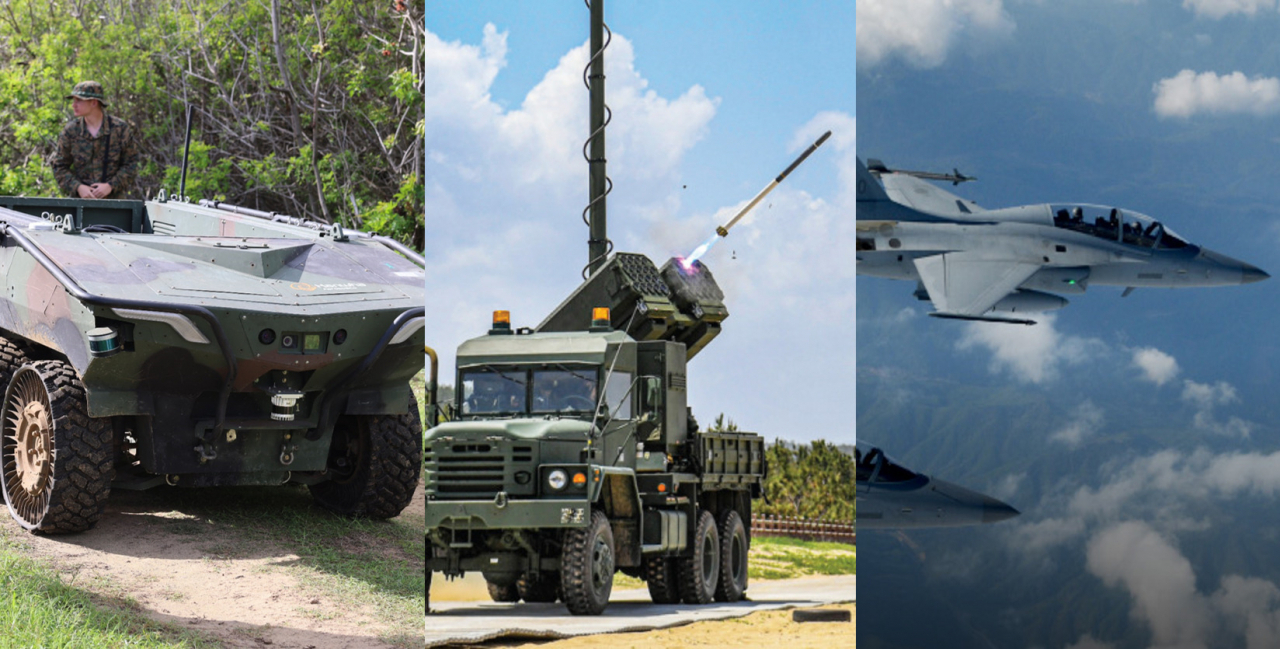[KH Explains] Korean defense firms aim big in US market
Hanwha Aerospace, Korea Aerospace Industries, LIG Nex1 look to score orders from world’s biggest military spender
By Kan Hyeong-wooPublished : Jan. 7, 2024 - 16:04

South Korean defense firms are seeking to break through into the US market, the biggest in the world, as the industry looks to carry on its export momentum.
Hanwha Aerospace on Thursday announced that it completed a field test of its multipurpose unmanned ground vehicle, Arion-SMET, with the US Army and Marine Corps in Hawaii in December. It was the first time a Korean UGV developer had taken part in the US Defense Department’s foreign comparative testing.
“Arion-SMET’s participation in the US FCT program is evidence of its potential success and its position as a strong contender in the UGV markets of the US and other countries in the future,” said Seo Young-woo, executive vice president of Hanwha Aerospace’s land systems business group.
In the wake of the FCT participation, Hanwha Aerospace plans to compete for the US Army’s small multipurpose equipment transport program as well.
Korea Aerospace Industries has been building up its resume to win the US Air Force’s tactical trainer project and the US Navy’s advanced tactical trainer project to acquire 500 units of light combat aircraft starting in 2024. To that end, KAI joined hands with US defense giant Lockheed Martin to develop an upgraded version of the FA-50, the Korean company’s light combat aircraft. If KAI wins the project, it could be worth over $35 billion.
The company scored a significant success when Poland signed a contract to acquire 48 FA-50s in September 2022. KAI said that it had completed the delivery of 12 units at the end of last year, taking only 15 months. The Korean firm plans to deliver the remaining 36 units of the FA-50PL, the upgraded version of the fighter jet reflecting the needs of the Polish government, between 2025 and 2028.
LIG Nex1 last month unveiled a $240 million investment to acquire a 60 percent stake in Ghost Robotics, a US quadruped robot developer. The Philadelphia-based company is known for its 60 Q-UGV model, a four-legged robot capable of maneuvering through extreme terrain. The robot has been used by the US military. Experts expect that LIG Nex1’s takeover of Ghost Robotics will serve the role of a bridgehead for the Korean firm into the US market.
“The US is looking to introduce foreign-made weapons systems, as its own munitions are being rapidly depleted,” Jeong Dong-ho, an analyst at Mirae Asset Securities, noted in a report released in October.
“LIG Nex1's Bigung surface-to-ship missile recently passed the US Foreign Comparative Testing program and is likely to enter the local defense market in the near future.”
According to the Stockholm International Peace Research Institute, the US military expenditure was estimated at $877 billion in 2022, taking up almost 40 percent of the world’s total military spending. No other country came close to America. China was the second-largest player with $292 billion in military expenditure.
Kang Eun-ho, former head of Korea’s Defense Acquisition Program Administration, highlighted the importance of the US defense market in his article published in the Korea Institute for Defense Analyses’ quarterly journal of Defense Policy Studies in April.
“If Korea cannot enter the world’s biggest defense market, the US, there will be limitations to expanding defense exports,” said Kang.
“To pave the way to enter the US defense market and secure cost competitiveness, the talks for the Korea-US (Reciprocal Defense Procurement agreement) need to be carried out swiftly.”
Considering that some big US weapon systems projects, such as armored vehicles, light combat aircraft and self-propelled artillery, are slated to begin in the next two to three years, Kang stressed that a memorandum of understating for the RDP must be signed at the right time between the two countries. The RDP is essentially a free trade agreement for defense items that can remove barriers for Korean defense firms in the US market.
President Yoon Suk Yeol reiterated the administration’s goal to propel the country to become the fourth-largest arms exporter in the world by 2027 in his New Year’s speech earlier this month. He underlined that the government will nurture the country’s defense sector as a national strategic industry and diversify export products and importers.
Korea has recently become one of the 10 biggest weapons suppliers in the world, as the country's arms exports jumped by 74 percent between 2018 and 2022, according to the SIPRI. The Korean defense industry is estimated to have logged $13 billion in exports last year after posting a record-high of $17.3 billion in arms exports in 2022.
“Given the nature of the global defense industry and the status of the US military, scoring an order from the US military means more than just a deal regardless of its size,” said an official at a local defense firm who wished to remain anonymous.
“That is why Korean defense firms are going all-out to enter the American market.”



















